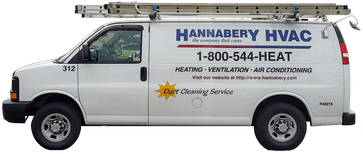HVAC Stands For:
Heating, Ventilation, Air Conditioning
HVAC/R = Heating, Ventilation, Air Conditioning, Refrigeration
Below we will define other terms you will hear in the HVAC industry to help make you a more educated consumer.
Just a Note...
In 1992, the Federal Government established minimum efficiency requirements for all heating and air conditioning equipment. If your present HVAC equipment; a furnace, heat pump, or air conditioning system was purchased and installed before that date, it could be highly inefficient by today's standards.
Efficiency ratings are important to understand because installing a new unit could achieve significant energy cost reductions. And that could save you from the higher operating expenses of some pre-1992 equipment.
Efficiency Terms...
DOE = The Department of Energy is a federal agency in charge of setting industry efficiency standards and monitoring the consumption of energy sources.
AFUE% = Furnace Efficiency. "AFUE" is a measure of a furnace's heating efficiency. It stands for Annual Fuel Utilization Efficiency. The higher the AFUE%, the more efficient the product. The government's established minimum rating for furnaces is 78%.
HSPF = Heat Pump Heating Efficiency. It stands for Heating Seasonal Performance Factor, or HSPF. The higher the HSPF rating, the more efficient a heat pump is at heating your home. There is no legislated minimum rating.
SEER = Cooling Efficiency. "SEER" is a measure of cooling efficiency for air conditioning products. SEER stands for Seasonal Energy Efficiency Ratio. The higher the SEER rating number, the more energy efficient the unit. The government's established minimum rating for air conditioning is 10.
Basic Terms...
Air Handler: The portion of a central air conditioning or heat pump system that moves heated or cooled air throughout a home's ductwork. In some systems, a furnace handles this function.
Heat Source: A body of air or liquid from which heat is collected. In an air source heat pump, the air outside the house is used as the heat source during the heating cycle.
Indoor Coil: The portion of a heat pump or central air conditioning system that is located in the house and functions as the heat transfer point for warming or cooling indoor air.
Outdoor Coil/Condensing Unit: The portion of a heat pump or central air conditioning system that is located outside the home and functions as a heat transfer point for collecting heat from or dispelling heat to the outside air.
Single Package: A year 'round heating and air conditioning system that has all the components completely encased in one unit outside the home. Used mostly for commercial and rooftop applications.
Split System: A heat pump or central air conditioning system with components located both inside and outside of a building -- the most common types installed in homes.
Supplementary Heat: The auxiliary or emergency heat provided at temperatures below a heat pump's balance point. It is usually electrical resistance heat.Also known as the heater package. But supplemental heat can also be gas or oil - fired equipment.
Zone: A zone is the area that one thermostat is controlling. For example: A two story house with a thermostat on each floor has two zones, one for each floor.
Technical Terms...
Ton: Heat pumps and air conditioners are generally sized in tons. Typical sizes for single family residences are between two and five tons. Each ton equals 12,000 Btuh. It is important to note that actual capacity is not constant and will change based on outdoor or indoor temperatures. The published capacity rating of air conditioners and heat pumps is based on performance at the ARI standard temperature levels of 95 F outside, 80 F inside.
Balance Point: An outdoor temperature - usually between 30°F to 45°F - at which a heat pump's output exactly equals the heating needs of the house. Below the balance point, supplementary electric resistance heat is needed to maintain indoor comfort.
Defrost Mode: During the heating cycle of a heat pump, frost may build up on the outdoor coil. To remove the frost and maintain efficiency, the system will automatically defrost itself. This usually only takes a few minutes, then the system automatically switches back to heating. It is normal to see steam rising from the outdoor unit when this happens.
British Thermal Unit (BTU): The amount of heat required to raise the temperature of one pound of water (about one pint) by one degree Fahrenheit.
Coefficient of Performance (COP): A ratio calculated by dividing the total heating capacity provided by the heat pump, including circulating fan heat but excluding supplementary resistance heat (Btu's per hour), by the total electrical input (watts) x 3.412. (See Heating Seasonal Performance Factor, above.)
Energy Efficiency Ratio (EER): A ratio calculated by dividing the cooling capacity in Btu's per hour (Btuh) by the power input in watts at a given set of rating conditions, expressed in Btuh per watt (Btuh/watt). (See Seasonal Energy Efficiency Ratio, above.)
Watt (W): A Watt is a unit of electricity.
Kilowatt (kW): A kilowatt equals 1,000 Watts. A kilowatt hour (kWh) is the amount of kilowatts of electricity used in one hour of operation of any equipment.
Well we hope you found this information useful. And there will, by the way, be a quiz on this next Tuesday. So good luck, and we'll see you then.
How Comfortable Do You Want To Be?
[Must be in our service area]

